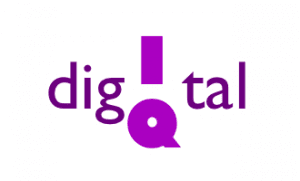When talking digital marketing with companies, I tend to come across two general postures:
and
- those who have been assigned the task of bulking up their digital marketing efforts.
Unfunded digital marketing
In the first case, there is typically widespread frustration. The digital team might believe it has the right strategy, but is not able to persuade its hierarchy to release the funds or allocate more people to an understaffed area. All too often, it’s not that there is no money. It is just that management is too cautious about deviating resources from that which has historically brought results. Management has not seen the light or, perhaps, has not been persuaded because of the absence of proof.
Misfunded or misguided efforts
In the second case, if money is no object, it is not the objective, either. Throwing money at Google adwords and Facebook ads to “capture” fans is not a result unto itself. Management may have understood (at least intellectually) that digital marketing is strategic; however, the issue is figuring out how to spend the money effectively (and against which objectives). The directive of spending money in digital may have been given; but, the impetus can often be misguided. For example, the incentive to spend may be stimulated by the expectation to save money. That’s sort of like thinking we need to sell this product just to make money. Click here if you would like to tweet that!
In either case, there is no quick fix other than a social media crisis. The success of a digital marketing campaign relies on a complex mix of strategy, resources and talent. For enduring success in digital marketing, the organization’s ability to be in a constant-learning mode is critical.
Key arguments for digital marketing
The key ingredients to convince management for greater resources should also be the base for creating a successful strategy when the green light from above has been given. Unlike traditional media, it is much more critical that a digital media strategy be aligned to the company culture. {Tweet this} Three signals to look out for when striving for an enduringly successful digital marketing strategy: The company has a de facto centricity on the customer, humility when listening to its clients, and employees that are the first fans and live the values of the brand. If the company does not exhibit these qualities, it is not that digital marketing is not possible or desirable; it is just the objectives, strategy and means must be adapted.
Here is a roadmap for creating a strong digital marketing plan.
- Digital marketing must be considered a part of the mix from the beginning to optimize the impact. Digital and ‘traditional’ media should live in symbiosis.
- The objectives must be clearly defined and stated — and shared among the key actors in the company (i.e. PR, sales, customer service and even IT…). Having a clear brief can be a good way to gain alignment.
- The digital strategy must be coherent with the target audience. Get into their shoes. Listen to them. Cultivate empathy.
- Carefully vet the ad or creative agency for the right talent. If you have to work with a big agency, make sure that their internal teams are aligned and fluid — digital marketing needs to be an integral part of an overall media mix. If it’s a smaller, boutique agency, sometimes, you will need to mix and match to find the good talent across the different platforms.
- Create a funnel with measurable and realistic goals for your digital strategy. If that goal has a real value to the organization, put a dollar value against it. This is probably the closest you will come to creating a valid ROI (short of getting a sale on an eCommerce site).
- Create an editorial line and calendar in the social media strategy that limits the “all about me” content and focuses on providing valuable content to your target audience. Each channel has a different code and language which must be respected. Make sure to find and fine tune the best rhythm (timing and frequency).
- Create regular updates internally whose purpose is to align the organization, alert about ongoing performance, absorb for learning and amend to improve the current campaign.
A key to building a successful digital marketing strategy is improving the organization’s digital IQ, especially of the senior management teams who control the purse strings. Click to tweet if you agree! On another level, to the extent the boss wants a return on investment, what about asking the finance teams to come up with a separate line item that allows the digital marketing efforts to be tagged appropriately?
As always, will be glad to have your comments and thoughts!













Great post and good insights have been provided..
Digital marketing needs less funds when compared to traditional marketing. All a person has to do put the right content and ensure the message should reaches the target audience very efficiently. For more insights about digital marketing, there is a video which is posted by Infosys BrandEdge. You can check it out for more information. http://bit.ly/Ob7L0r
Great post! You may enjoy this picture that summarises well this article – http://www.glasbergen.com/wp-content/gallery/mana…
Thanks @Stanley.
@Arjun: I will have to get access to that video by another means as it doesn't show on my iPad. It is true that the cost is generally lower in digital, but the investment in human resources must not be underestimated.
@Noam: love it. Thanks.
My recent post Money is no object? How to find the funds for digital marketing
I am new to this field, but I find it fascinating. We are able to connect with information and people that otherwise would have not been accessible without the digital marketing methods we have today! Thanks Minter!